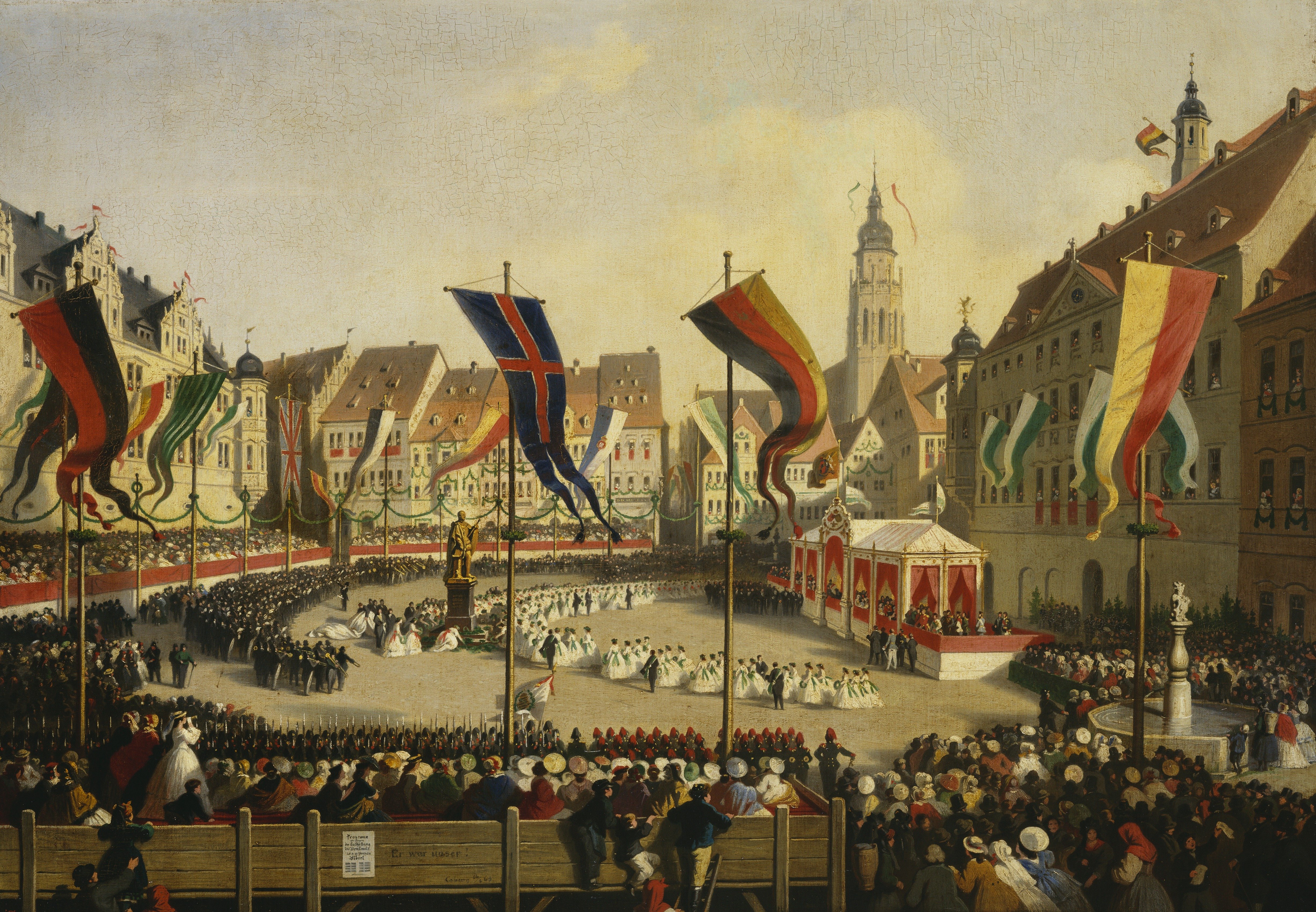
Prince Albert's lasting influence can be seen in many mediums
ELKINGTON & CO
Prince Albert
c.1864-5Silver (partly gilt), enamel | 94.7 x 42.5 x 41.0 cm (whole object) | RCIN 50468
Prince Albert Victor (1864-92), the eldest son of Albert Edward, Prince of Wales and his wife Alexandra, was born on 18 January 1864. On 22 February E.H. Corbould, who was at the time fully engaged by the Queen on memorial projects of various kinds, was paid three guineas for providing a design for the sculptor William Theed as a basis for his model of the Prince. Queen Victoria, as both grandmother and godmother to the new Prince, had originally intended to present him with a more traditional christening cup featuring two figures, but as Corbould's sketches progressed she decided upon a single figure. The Queen's fourth daughter, Princess Louise, was also involved in the design. The work was put in the hands of Elkingtons in March 1864, but in their anxiety ‘to render it worthy of the occasion’ they not did not deliver the finished object until Christmas 1865.
The iconography of the statuette was complex. The figure was inspired by Robert Thorburn's large miniature of Prince Albert wearing armour. The armoured Prince sheathes his sword: the struggle is over, he has fought the good fight. According to the Illustrated London News, which carried an illustration of the gift on 6 January 1866, the figure personified Christian from Bunyan's Pilgrim's Progress, perhaps a partial reference to the recipient's own name.
The symbolism continues around the base, with further motifs to inspire the young Prince. The three figures, also modelled by Theed, represent the three cardinal Christian virtues, Faith, Hope and Charity. Two drawings by Princess Louise relating to Hope and Charity are in the collection of HRH The Prince of Wales. Above each figure is a form of lily, each with its own meaning: above Faith is a lily of purity; above Hope a water lily, symbolic of new life and christenings; and above Charity is a lily of the valley to ensure the return of happiness. Snowdrops, emblematic of youth or spring, are included in the floral motifs, as is a broken rose, inscribed with the word ‘Frogmore’, where Prince Albert was buried.
The weight of the visual symbolism was further enhanced by text from St Paul's Epistle to Timothy, and verses exhorting the Prince to follow in his grandfather's path. They were composed by Emma Protheroe, wife of the rector of Whippingham, near Osborne House. Queen Victoria noted in her Journal on 15 February 1864 that ‘Mrs Prothero has written some beautiful lines to have engraved under the plinth’.
The Illustrated London News report on 6 January 1866 described Prince Albert as the ‘presiding genius of the whole composition for almost every portion bears some reference to his exemplary life & character’. A closely related statuette was commissioned by the Queen as a christening gift for another of her grandchildren, Prince Christian Victor of Schleswig-Holstein, the eldest son of Princess Helena, in 1867.
Text from Victoria & Albert: Art & Love.







